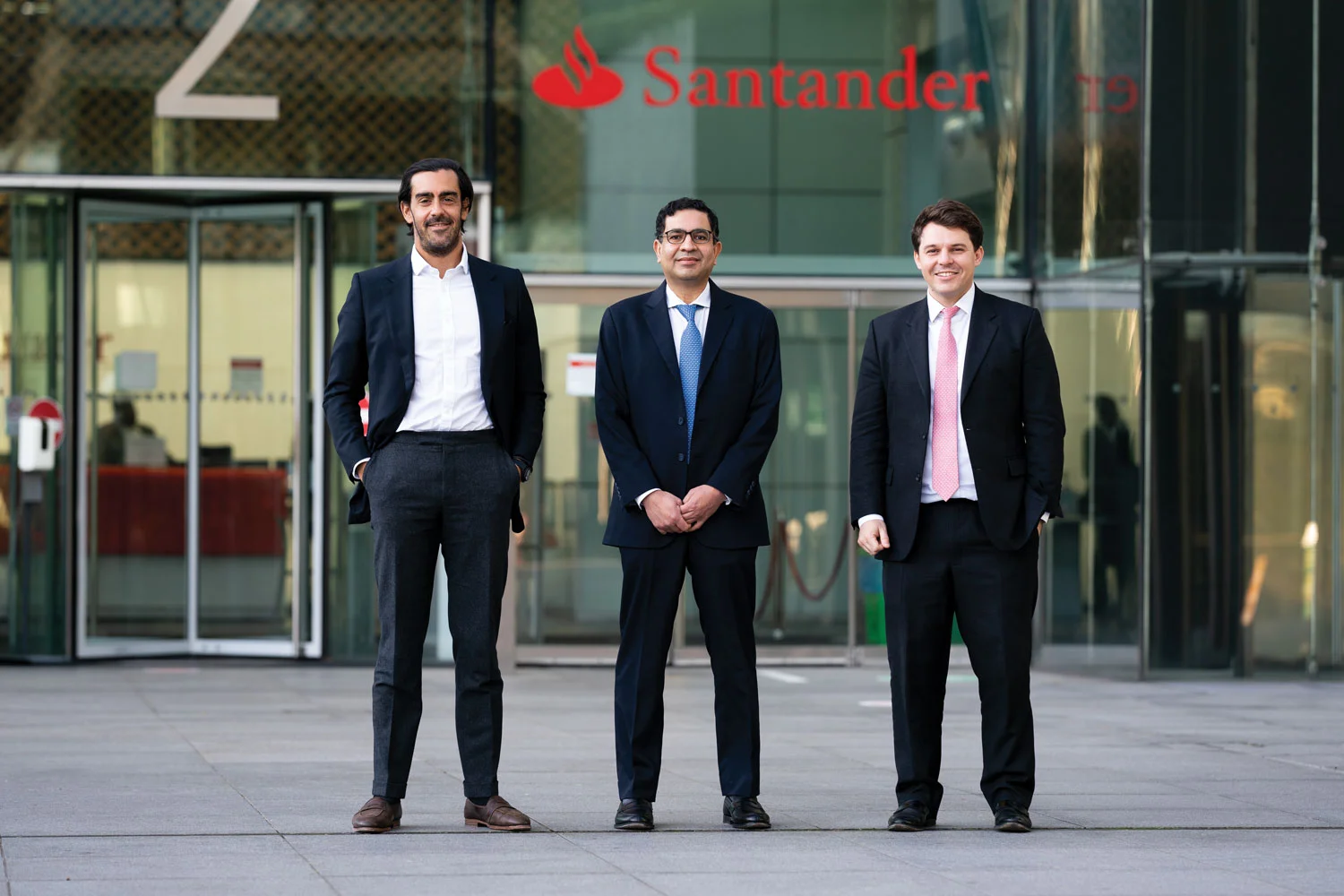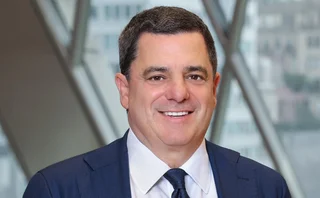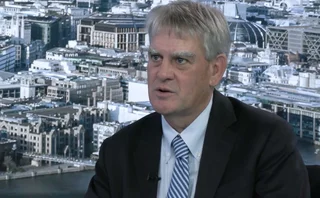
Risk solutions house of the year: Santander Corporate & Investment Banking
Risk Awards 2022: Multi-jurisdiction transactions saw the bank solve three-way currency conundrum and take on litigation risk

Throughout 2021, Santander Corporate & Investment Banking’s global coverage was tested to the limit.
Having feet on the ground in Poland and Colombia proved critical to the bank’s ability to underwrite and risk-manage a share-backed margin loan spanning the two jurisdictions for private equity firm Novator. With diligence, the bank took on deal-contingent hedging for the first large-scale US offshore wind project under the Biden administration, against near-certain litigation. The bank also rose to the reflation challenge, combining inflation hedges with environmental, social and governance (ESG) goals.
This ability to tackle the thorniest problems found Santander negotiating a complex three-way currency conundrum in the middle of the Colombian jungle.
Wanting to improve and lower the costs of telecommunication services, particularly for its rural population, the Colombian government put a spectrum of frequencies up for auction in 2019. Investment firm Novator spied an opportunity to expand its Latin American presence through its Colombian telco business WOM and reached out to Santander.
Being able to navigate risk in multiple jurisdictions during the covid pandemic made the bank stand out, according to Thomas Leslie, partner and general counsel at Novator. “We looked and explored this with multiple banks, but the other banks were just so far away, they could never get comfortable with this type of structure and with this type of complexity,” says Leslie.
The Colombian government required bidders to provide performance bonds to guarantee satisfactory completion of the project. Around $300 million notional of bonds with minimum two-year duration were required to cover infrastructure costs, build cell towers and cover future obligations of licence fees.
To minimise the cash required as security against the bonds, Novator planned to use its 20% share in Polish telco, Play Communications, as collateral.
Having worked with the private equity firm as it expanded its telco reach in Chile and Poland, Santander was well acquainted with its client’s Colombian ambitions. Yet an array of challenges awaited.
First, the bank needed to assess the probability of the government claiming under the bonds. The cell towers would need to be built predominantly across rural sites through the Colombian jungle, which is home to notorious gangs and where the terrain can be difficult.
The deal needed to navigate through three currencies. Novator funds in US dollars, while the obligations would be in Colombian pesos. The collateral base, comprising shares of Play Communications, was priced in Polish zloty. Furthermore, the client wanted one bank to assume the entire deal.
“This was a transaction that was already significantly complex in terms of the number of geographies that it touched, and the complexities around the performance bonds,” says Sam Baldwin, Santander’s head of strategic equity solutions. “We had done some initial sounding with the client around [syndicating the deal with] other banks, because they would have got a better financial reference in terms of cost if there was more than one bank. However, they had a strong desire to keep it to one bank due to the complexity to ensure financial close.”
Novator’s Leslie says other banks struggled with the risk. “It was the complexity of the risk that you had to get comfortable with: Polish risk, you had the operator in Poland, the market risk of being listed in Poland; and the Columbian macro and investment risk.”
Santander assumed the full $300 million required for the performance bonds by providing an undrawn margin loan facility against the value of the Play Communication shares. Over-collateralisation afforded extra protection for the bank, while trigger events built into the financing package would require Novator to add cash to the structure if the shares fell below a certain value.
“[The solution] mitigated the need completely in having to put any cash into the structure, making it completely financially optimised, and also solved the FX issue between the three currencies we were looking at. So, the solution in the end was a very neat one,” says Baldwin.
The transaction included a mechanism to ensure Novator met the financial obligations of the Colombian government. That meant periodically testing the equity Novator put into the project and the infrastructure progress. If certain metrics were not met, Santander would de-risk the transaction by requiring Novator to put additional equity into the structure.
The solution] mitigated the need completely in having to put any cash into the structure, making it completely financially optimised, and also solved the FX issue between the three currencies we were looking at. So, the solution in the end was a very neat one
Sam Baldwin, Santander
The transaction kicked off in June 2020, when the performance bonds were issued after a completion of the tender process, but the structuring headache didn’t stop there.
Originally Santander hoped to de-risk the transaction down roughly 50% within six months. But having reached out to local banks in Colombia and global players it became clear that none would connect the Colombian performance bonds with the Polish shares.
“As we went through that exercise, we started with a reasonably wide base, but a number of those institutions fell away because they couldn’t put the two pieces together. They couldn’t do the performance bond assessment, as well as the share security assessments, especially with the currencies involved,” says Baldwin.
As cell towers went up across Colombia, Novator’s infrastructure risk was decreasing. This allowed Novator to replace the cash obligation in the performance bonds with more traditional – and cheaper – forms of insurance. This restructuring is ongoing, and has so far reduced Santander’s exposure to around $85 million.
Additionally, Novator was keen to sell its Play Communication shares at a the right price. That opportunity arose when French telco, Iliad, made a bid for the Polish firm. Yet the acquisition presented new hurdles.
Hardwired into the undrawn margin loan documentation was a mandatory M&A prepayment event, meaning the facility had to be replaced with cash collateral. A collateral substitution change was also required in the performance bonds.
Santander provided a bridging solution between the M&A announcement and financial close and was appointed settlement agent in Poland to deliver the shares to Iliad and receive the cash from the sale.
Euro-denominated proceeds were converted to US dollar collateral. This required a quasi-financing arrangement against dollars delivering into non-deliverable Colombian pesos, should the margin loan need to be drawn.
Though the project appears to be quasi evergreen, Baldwin says Novator’s aim is for its local operator WOM to be able to support its own obligations into the future.
“That is expected to happen three or four years into the project, once the base of subscribers is high enough. It’s going well, so we are looking forward to that day, but we’re not quite there yet,” says Baldwin.
Litigation risk
By combining its sponsor coverage, financing business and risk management activities, Santander has taken contingent financing risks against some of the most uncertain backdrops.
A prime example was a US greenfield project finance deal for Vineyard Wind. The joint venture between Avangrid renewables and Copenhagen Infrastructure partners (CIP) aimed to supply about 10% of Massachusetts’ electrical needs with the construction of an 800 megawatt offshore wind farm.
Santander was financial adviser and sole hedging adviser to the project sponsors.
“The Santander team did a great job,” says Luke Liu, vice-president at CIP. He adds the bank ensured alignment between all parties. “There were just a lot of complexities across a tight timeframe.”
It was the first deal that happened just after the switch in administration. So, in a way, you didn’t have many precedents to go by. So, you really had to do your due diligence on the deal and get comfortable
Krishna Murali, Santander
Discussions kicked off in 2018, though enthusiasm ebbed and flowed with the US political agenda. Momentum eventually gathered when the Biden administration set ambitious targets for offshore wind and renewable energy.
“It was the first deal that happened just after the switch in administration. So, in a way, you didn’t have many precedents to go by. So, you really had to do your due diligence on the deal and get comfortable,” says Krishna Murali, Santander’s global head of sales for markets.
The biggest hurdle was the near-certain litigation the project would face. Several offshore wind projects had failed after legal pressure from local residents and environmental groups.
The project required a $2.1 billion 20-year loan to cover the construction and operation costs. The sponsors wanted to fix the interest rate for the maturity of the loan. As much of the technology required to build the turbines was coming from Europe, there were euro-based liabilities to consider.

To price the litigation risk, Santander took advice from its own legal counsel as well as the sponsors’ legal counsel. The bank had to understand who the likely plaintiffs were, what their complaints would be, and the chance those complaints would prevail in court.
As the project had already secured most of the required permits, any federal level litigation would be against the government, which issued the permits, meaning the project itself should avoid being sued.
“It wasn’t a question of whether or not the project itself would ultimately prevail in any kind of litigation scenarios. The risk that was being asked of us was, will this get to financial close and will the banks commit to funding the facility to begin the capex work required prior to construction,” says Eli Chamberlain, Santander’s head of risk solutions group US.
The dual borrower structure saw CIP opt for a $1 billion 20-year deal contingent interest rate swap, while Avangrid chose to shoulder the deal risk by hedging with a vanilla interest rate swap. The sponsors also locked in a deal contingent strip of FX forwards totalling €420 million that went out three years.
Pressure to close the deal accelerated as rates fell in response to the spread of the Covid-19 pandemic.

“When the Covid-19 pandemic sent shockwaves through the market pushing rates lower during the middle of last year, the tail risk in the transaction grew significantly. As the client was paying fixed in the pre-hedge, if the underlying deal collapsed at that point in time, we would have been left exposed to a loss on our market hedges,” says Matías Mayora, head of UK and continental Europe structuring, Santander.
Between Santander taking on the transaction risk and the deal closing, three lawsuits were filed. Having learned from similar projects that had failed in the past, both sponsors were able to provide enough comfort to the banks to close the financing in September 2021.
Green inflation
With the reopening of the post-Covid economy driving the reflation story throughout 2021, demand for inflation hedges in the UK infrastructure sector soared.
The Renewables Infrastructure Group (Trig), which is managed by Infrared Capital Partners, approached Santander in August to execute ESG-linked inflation derivatives.
A portion of the revenues from Trig’s power-generation activities are inflation-linked, benefiting from the Low Carbon Contract Company’s Contracts for Difference scheme, which is consumer price inflation (CPI) linked and energy regulator Ofgem’s renewable obligation certificates, which are linked to the retail prices index (RPI).
Trig achieved pricing close to 3.5% on the RPI swap and 2.9% on the CPI swap, compared with expectations of 3% for RPI and 2% for CPI from financial model projections, says Christian Banna, Santander’s head of risk solutions group UK.
“This is a unique transaction in many ways, as it was a portfolio hedge executed at one of Trig’s holding companies, but also benefited from a fund level guarantee,” says Banna.
Santander was tasked with executing the RPI portion and novated 80% of the position among four of Trig’s relationship banks – ING, National Australia Bank, NatWest and Sumitomo Mitsui Banking Corporation. Santander also received a 20% stake in the CPI hedge.
The hedging agreements contained a pricing mechanism that allowed Trig to receive a sustainability payment from the hedging banks for the first three years of the contracts if the firm delivered against ESG metrics. A two-way payment meant cashflows could be amended against Trig if it failed to hit key performance indicators. In either case, the funds would be donated to Trig’s community funds to benefit local communities.
“Our client was able to hedge the inflation risk on a number of separate renewable assets with a consolidated hedge. But the standout feature was the ESG pricing mechanism, as it was the first inflation-linked, sustainability-linked derivative executed by all of the parties involved,” says Banna.
Only users who have a paid subscription or are part of a corporate subscription are able to print or copy content.
To access these options, along with all other subscription benefits, please contact info@risk.net or view our subscription options here: http://subscriptions.risk.net/subscribe
You are currently unable to print this content. Please contact info@risk.net to find out more.
You are currently unable to copy this content. Please contact info@risk.net to find out more.
Copyright Infopro Digital Limited. All rights reserved.
As outlined in our terms and conditions, https://www.infopro-digital.com/terms-and-conditions/subscriptions/ (point 2.4), printing is limited to a single copy.
If you would like to purchase additional rights please email info@risk.net
Copyright Infopro Digital Limited. All rights reserved.
You may share this content using our article tools. As outlined in our terms and conditions, https://www.infopro-digital.com/terms-and-conditions/subscriptions/ (clause 2.4), an Authorised User may only make one copy of the materials for their own personal use. You must also comply with the restrictions in clause 2.5.
If you would like to purchase additional rights please email info@risk.net
More on Awards
Collateral management and optimisation product of the year: CloudMargin
Delivering the modern blueprint for enterprise collateral resilience
Flow market-maker of the year: Citadel Securities
Risk Awards 2026: No financing; no long-dated swaps? “No distractions,” says Esposito
Pricing and analytics: fixed income – Quantifi
Quantifi delivers high-performance, transparent and adaptable pricing and risk analytics for fixed income and credit markets
Derivatives house of the year: Citi
Risk Awards 2026: Rev up, RWAs down, as US bank gets back on track (with added XiNG and XiP)
Technology vendor of the year: SS&C Algorithmics
Risk Awards 2026: From cloud, to chips, to maths tricks – vendor getting more out of existing tech
SS&C Algorithmics: winner’s interview with Curt Burmeister
SS&C Algorithmics wins three categories in this year’s Markets Technology Awards in addition to Technology vendor of the year at the Risk Awards
Best vendor for system support and implementation: Murex
Murex wins Best vendor for system support and implementation at the Markets Technology Awards 2026
Pricing and analytics: cross-asset and structured – Murex
Murex wins Pricing and analytics: cross-asset and structured at the Markets Technology Awards 2026 thanks to its MX.3 platform







